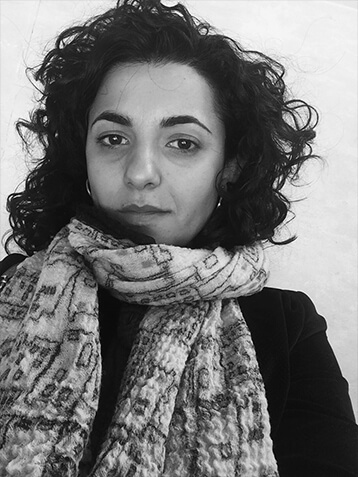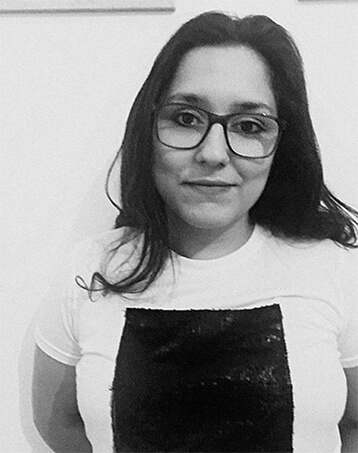Common Place:
intersections and
collectivities in
the city
"At the core of this necessity of a politics that transforms life and that can be transformed by life, there wasn’t a claim against injustice but the desire of finding the right voice for one’s own body, in order to fight the deep feeling of being spoken by somebody else (...)"
— Claire Fontaine
"When space is fully familiar, it becomes a place."
— Lina Bo Bardi
According to the United Nations, 55% of the world’s population currently lives in urban areas and this number is expected to increase to 70% by 2050¹. The city is the everyday reality for the majority of people. One route to start reflecting how we conceive ourselves as a community is to understand the city’s formation and transformations. Following French historian Jacques Le Goff, the city’s traditional historical functions are “trading (commerce), information, cultural life and power"². These four aspects entail communication and contact and, in this sense, the city comprehends, by definition, the experience of relating to one another. Looking back to the past as a way not to get lost in the present and to imagine possible futures.
Conceiving urbanisation at a global and wide historical perspective, we notice that since urbanisation has progressively increased, both in physical and population volume, since the 19th century, the city has become, for many of us, the main space where we live and interact. In the Global South, uncontrolled urban growth has brought huge challenges, which are experienced by the great majority of citizens every day, undoubtedly echoing the historical foundations of post-colonial societies. In the 20th century, the overlaying of temporalities caused by technological development and the vast physical density of daily living in the city have conjured a sort of chaos that leads to a process of massification of sensibilities, violently and continuously pushing singularities into invisibility. São Paulo, as with many other metropolises around the world, is made of an extremely diverse agglomeration of people. However, its citizens spend most of their time in social bubbles that are deeply rooted in individualistic processes dictated by the contemporary organisation of work and income. Our way of living is increasingly more autonomous (and automated). We travel on the same routes without really meeting each other.
In light of this, for such a diverse group of people, the possibility of being able to understand each other’s points of view, in the sense of a collective feeling of belonging, becomes increasingly difficult. In an interview for Gama magazine, published on 2nd April 2020, psychoanalyst Cristian Dunker said that in order to achieve a sense of belonging to a group, “we need a taste for the experience of dissolution in itself, where our own individuality is temporarily suspended. This experience does not apply to the masses, but to community, where a common experience is shared, securing and inducing our sense of belonging.” In this sense, the power of the city as a place of encounter and as a stage for common experience is still possible when it is perceived as a community.
To think and conceive of the city as a community, or as a common place, is the aim of the current proposal. This exhibition intends to give space to forms of imagination that explore collaboration, dialogue between different people, mutual learning, listening, and a strong commitment to the collective. Our project is an attempt to give visibility to, and personify, an active existence connected to our surroundings, creating situations and experiences that allow us to see the city from the perspective of the shared, which is materialised in the public space of the Ibirapuera park. More specifically, our curatorial aim is to consider the notion of the public, of experimentation and collaboration with works that are by themselves the formalisation of these ideas, striving for a debate between the aesthetic and social-political spheres and engaging not only artists and cultural workers but also professionals and agents from other fields.
If we think that all art must ideally be public, given that the making of art is ultimately an act of creation and a reflection on the world, the issue of access to art becomes an urgent matter. It is even more urgent when the process of social exclusion continues to widen. To make art for and with the public space is, therefore, a way of reflecting on the role of art itself.
In the last few months, the issues addressed here have gained an even more urgent dimension. Reality has summoned us to put into practice a sense of collaboration, as each new reported case of COVID-19 brings consequences for the whole of humanity. We have been reminded that we are all part of a large community. We need to learn how to live together again and to see others as equals in their singularity. We depend on ourselves and the city is just an evidence of that fact.
Camila Bechelany
Curator
1 Available data here: https://news.un.org/pt/story/2019/02/1660701
2 LE GOFF, Jacques. Por amor às cidades: conversas com Jean Lebrun. São Paulo: UNESP, 1998, pp. 29.
3 Via https://gamarevista.com.br/conversas/um-brasil-menos-polarizado/ consultado em 2 de abril de 2020 (free translation).
Curatorship
Camila Bechelany

Camila Bechelany is an independent curator, researcher and editor. In 2020, she was curator-in-residence at BAR Project, in Barcelona. In 2019, she curated Pivô Research’s art residency in São Paulo and was a member of the Centro Cultural São Paulo Critics’ Group. As invited curator at Pinacoteca de São Paulo, she organised the exhibition Artur Lescher: Suspension (2019). Between 2016 and 2018, she was assistant curator at Museu de Arte de São Paulo (MASP), where she co-curated the collective exhibition Histories of Sexuality and the solo exhibitions: Guerrilla Girls, Wanda Pimentel, Teresinha Soares and Cândido Portinari, amongst others. Her independent projects include the exhibition Parks and Other Pretexts, with Patrícia Leite and Cristiano Rennó (April, 2019) and the publications Revista Pivô and Imannam. She has a Master’s Degree in Art & Public Policy from the New York University and in Cultural Anthropology from the École des Hautes Études en Sciences Sociales (EHESS), Paris, where she is currently studying for a PhD in Art History and Sociology.
Assistant Curator:
Khadyg Fares

Khadyg Fares graduated in Social Communication from Universidade Presbiteriana Mackenzie, in São Paulo, and in Art History from Universidade Federal de São Paulo (UNIFESP). From 2018 to 2020, she was part of the curatorial team at Pinacoteca de São Paulo, where she worked as assistant curator for the following exhibitions: Fernanda Gomes (2020); and We Are Many: Experiments in Collectivity; Rosana Paulino: The Sewing of Memory; and Artist’s Work: Image and Self-Image, in 2019. Between 2016 and 2017, she worked as a researcher at the São Paulo Biennial Foundation Wanda Svevo Historical Archives. She was the coordinator of COCAAL (Art and Cinema in Latin American Colloquium) in 2017 and 2019.

